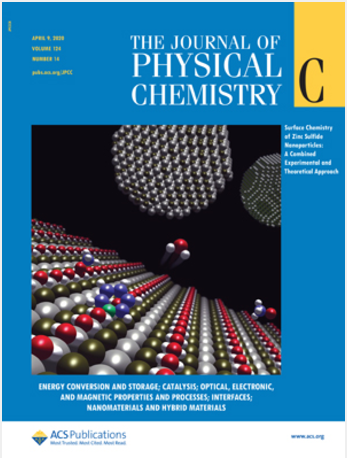Surface Metal Salt Modulating and Inner-Shell Doping of Green Indium Phosphide Quantum Dots toward High Efficiency and Narrow Emission
IF 3.3
3区 化学
Q2 CHEMISTRY, PHYSICAL
引用次数: 0
Abstract
Low-toxicity indium phosphide (InP) QDs are considered to be an ideal alternative to heavy metal QDs and have emerged as a promising candidate for next-generation optoelectronic applications. However, the optical performance of InP QDs still lags behind that of Cd-based QDs, partly due to the surface traps caused by the lattice mismatch between InP and ZnS. Here, Al, Ga, and In salts are used to modify the surface of the green InP core before the growth of the inner shell of ZnSeS. These metal ions are thought to play an effective role in removing P dangling bonds on the surface of the InP core. By using AlCl3 as a modifier, the line width is reduced from 36.7 to 35.6 nm. Then, a small amount of Mn ions is doped in the second step of ZnSeS inner-shell growth to form the inner-shell structure of Zn(Mn)SeS alloys. Mn doping may change the crystal structure of ZnSeS, and reduce interfacial defects and stresses. After surface metal salt modulating and inner-shell doping, Al-, Ga-, and In-InP QDs all reach better efficiency and line width than the untreated ones. And the best performance is obtained by Ga-InP/Zn(Mn)SeS/ZnS QDs with a fwhm of 35 nm and a PLQY of 94%.

绿色磷化铟量子点的表面金属盐调制和内壳掺杂
低毒性磷化铟(InP)量子点被认为是重金属量子点的理想替代品,并已成为下一代光电应用的有前途的候选材料。然而,InP量子点的光学性能仍然落后于基于cd的量子点,部分原因是由于InP和ZnS之间的晶格不匹配导致的表面陷阱。在znse的内壳生长之前,Al, Ga和In盐被用来修饰绿色InP核的表面。这些金属离子被认为在去除InP核表面的P悬空键方面起着有效的作用。采用AlCl3作为改性剂,线宽由36.7 nm减小到35.6 nm。然后,在ZnSeS内壳生长的第二步中加入少量Mn离子,形成Zn(Mn)SeS合金的内壳结构。Mn的掺杂可以改变znse的晶体结构,减少界面缺陷和应力。经过表面金属盐调制和内壳掺杂后,Al-、Ga-和In-InP量子点的效率和线宽均优于未经处理的量子点。其中Ga-InP/Zn(Mn)SeS/ZnS量子点性能最好,fwhm为35 nm, PLQY为94%。
本文章由计算机程序翻译,如有差异,请以英文原文为准。
求助全文
约1分钟内获得全文
求助全文
来源期刊

The Journal of Physical Chemistry C
化学-材料科学:综合
CiteScore
6.50
自引率
8.10%
发文量
2047
审稿时长
1.8 months
期刊介绍:
The Journal of Physical Chemistry A/B/C is devoted to reporting new and original experimental and theoretical basic research of interest to physical chemists, biophysical chemists, and chemical physicists.
 求助内容:
求助内容: 应助结果提醒方式:
应助结果提醒方式:


